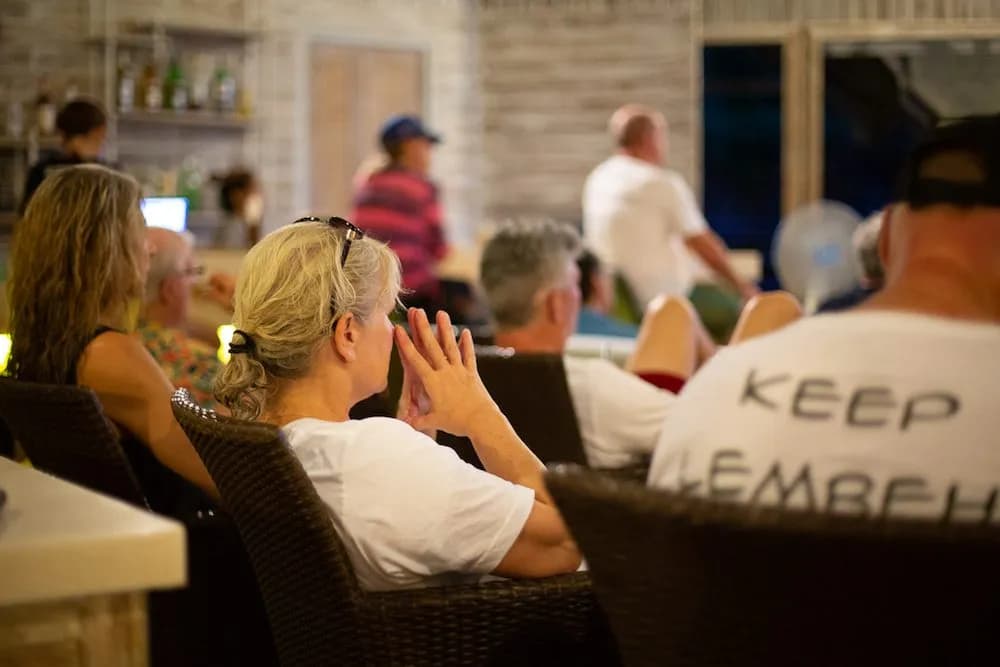How Deep Are the Dives in the Lembeh Strait?
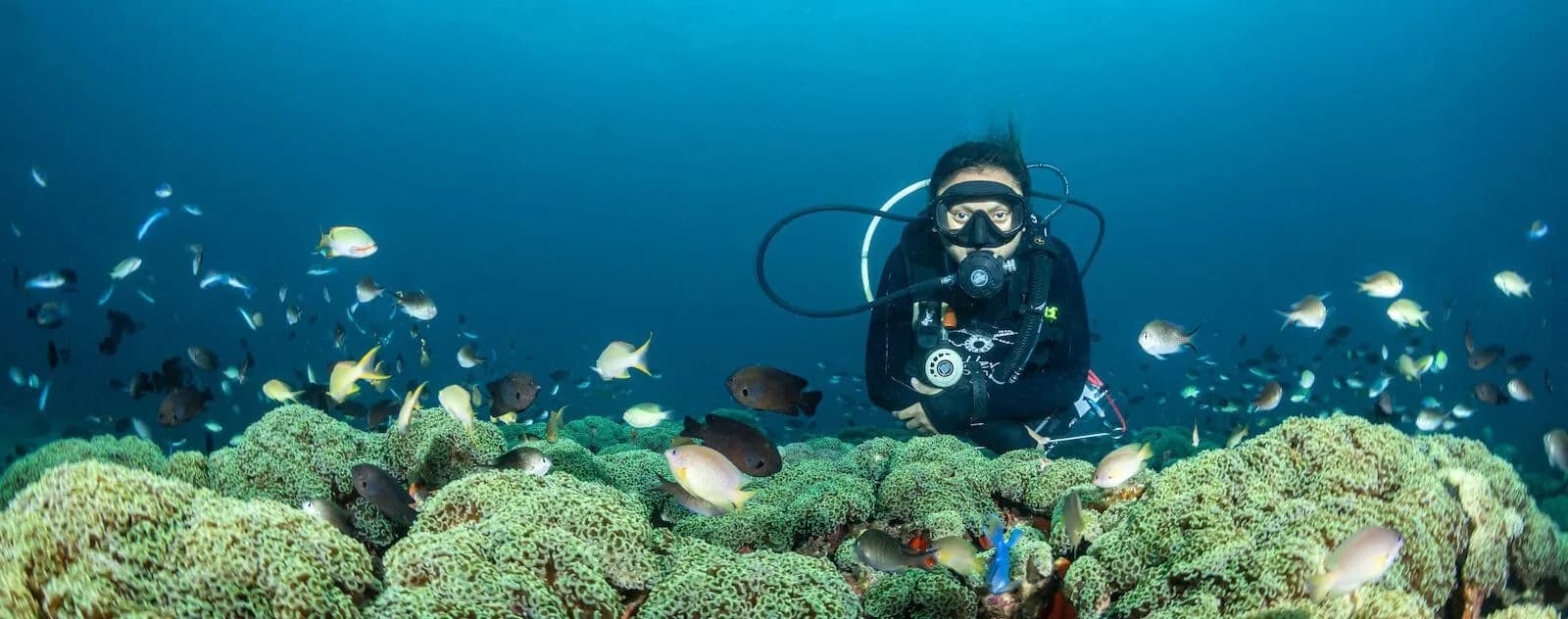
Are you considering a driving trip to the Lembeh Strait but want to know whether the dive sites are suitable for you or your dive travel companion or group? You might be wondering how deep the dive sites are and what certification levels they are suitable for – as well as what critters can be found at each depth. In this article, we explain the topography of the Lembeh Strait, dive site depths, how we dive, and what you might see at different depths – and take a closer look at a few very special sites.
Understanding the Topography of the Lembeh Strait
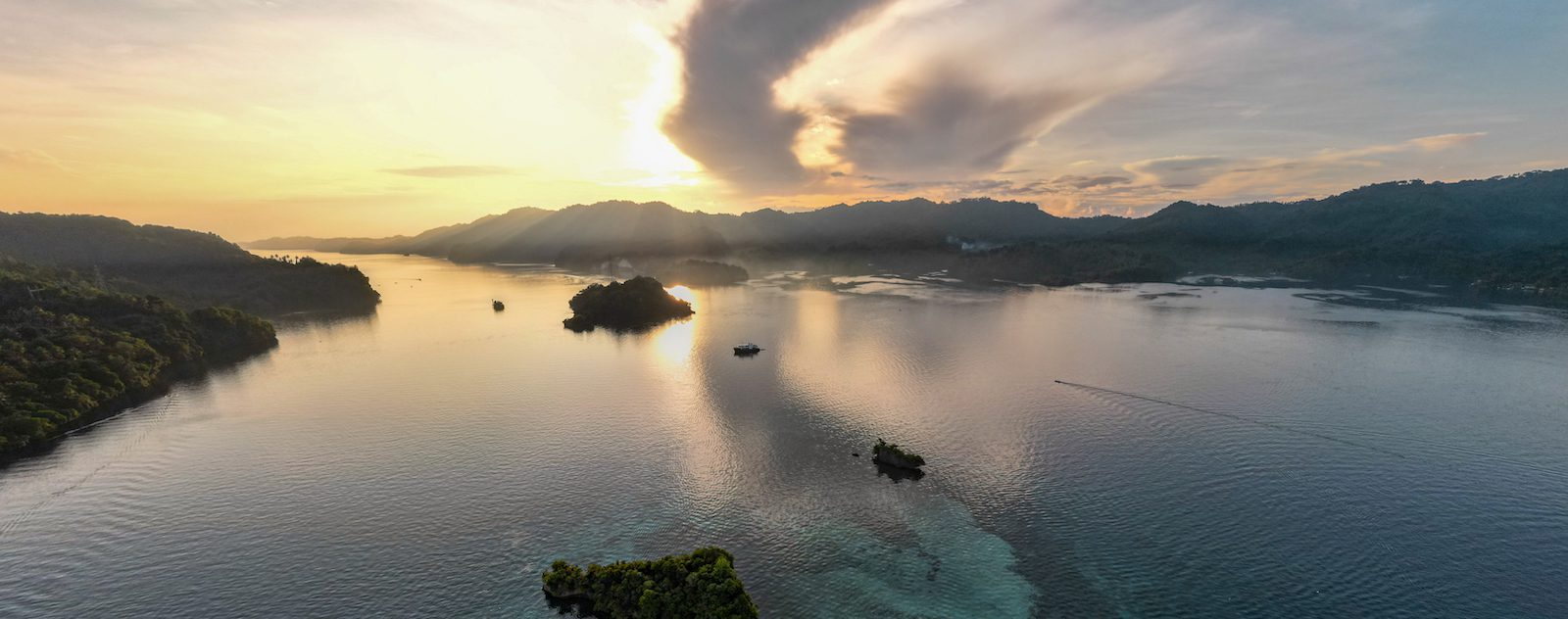
Landscape at Lembeh, Indonesia
The Lembeh Strait is a body of water that flows between mainland Sulawesi and Lembeh Island. It is tidal but currents are usually from zero to mild as the straight is extremely wide. The Strait is similar to a river in formation with banks on either side and a V-shaped topography with sloping sides down to the bottom. The center of the Strait is generally the deepest point.
How Deep Are Lembeh Strait Dive Sites?
Because of the Lembeh Strait’s sandy sloping sides, the majority of dives here dives can be made at any depth. Divers enter the water close to the banks where the water is as little as a few meters deep.
What Is “Diving Lembeh Style”?
“Diving Lembeh Style” is a term that is often heard when diving in Lembeh! It refers to entering close to the banks and then venturing down the sandy slope until your planned depth is achieved. It is not a race down the slope and many critters are usually found along the way. If there is any current then the swim down is in a diagonal direction, going with the current. This usually takes up 20-25% of the dive.
Once at your planned maximum depth, the dive is then focused on slowly making your way back up the slope in a zig-zagging manner, swimming back and forth (almost like a slalom skier) and looking for critters along the way. By zig-zagging back up instead of swimming in only one direction. It ensures that the complete dive site is covered and any possible critter findings are achieved. Diving Lembeh Style is all about going slowly and looking carefully!
Can Any Level of Divers Dive in the Lembeh Strait?
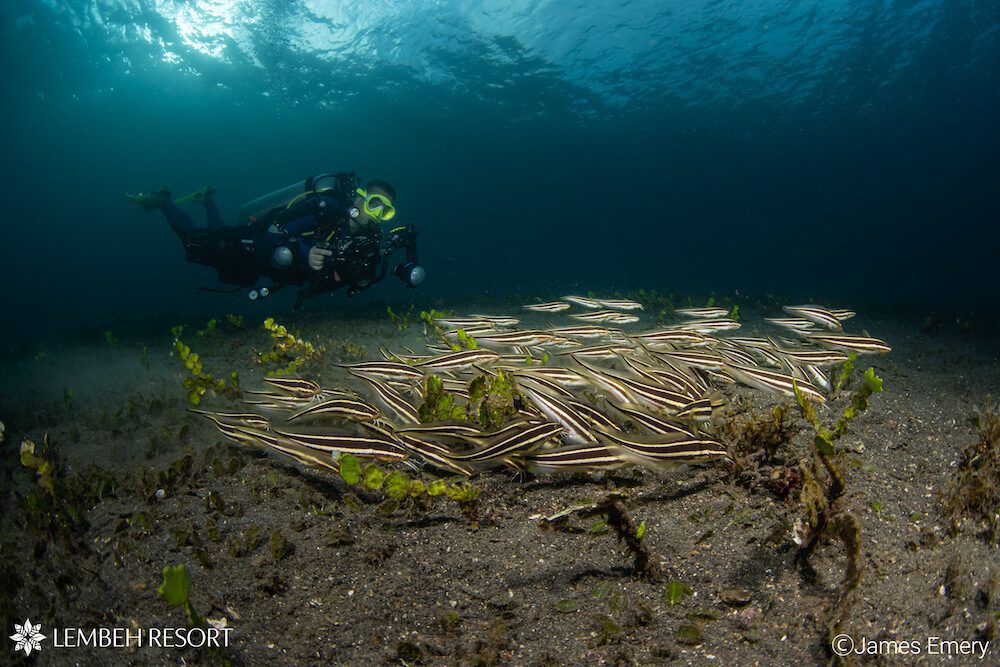
School of fish and a diver for underwater photography at Lembeh, Indonesia
Absolutely! The Lembeh Strait offers warm waters all year round and exceptionally easy conditions. Visibility may be less than when reef diving but as you are swimming slowly and looking carefully at what is immediately in front of you (and not in the distance), visibility is not usually a factor.
Some dive sites cater specifically to Advanced Open Water certified divers due to depths exceeding 18 meters (more on this below under dive sites).
For an in-depth exploration of the best time to dive in Lembeh Strait, check out our previous article, “The Best Time for Diving in Lembeh“.
At What Depth Are the Most Iconic Critters in the Lembeh Strait?
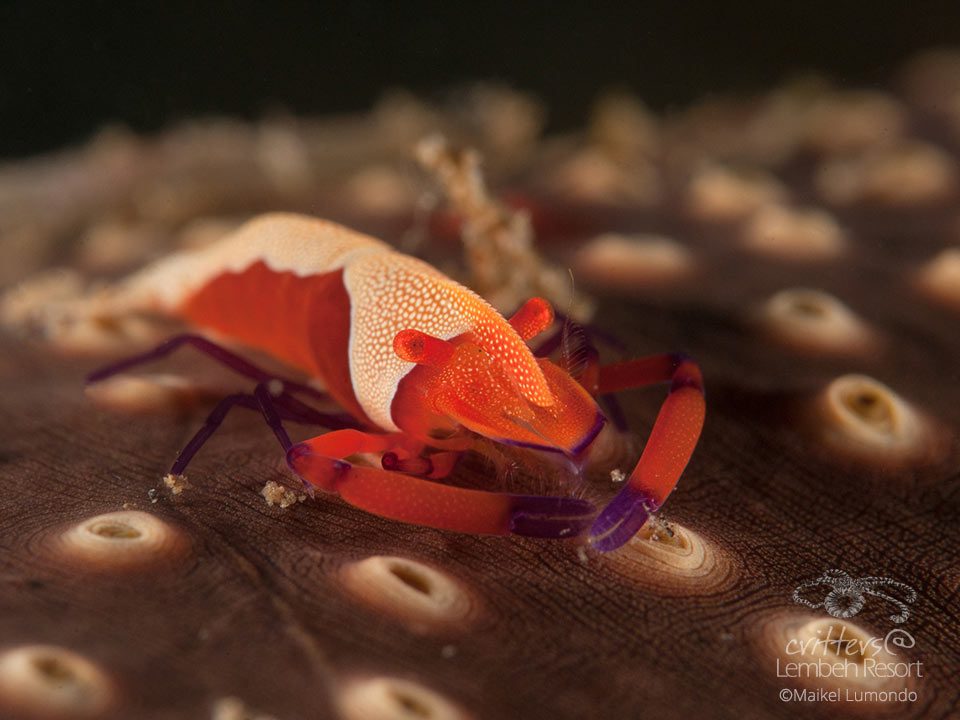
Emperor Shrimp spotted at Lembeh Strait
All and any!! There are many critters that prefer exceptionally shallow depths – particularly many of the iconic octopus species that we see here. They can often be found on the sand flats, close to the banks in as little as 5 meters. These depths are often popular areas to find fire urchin crabs, sea cucumbers with Emperor shrimps, and also seahorses.
While frogfish can be spotted throughout the dive range (starting from 10 meters), pygmy seahorses tend to prefer slightly deeper waters, particularly at our combination sites where they can be found around 25 meters.
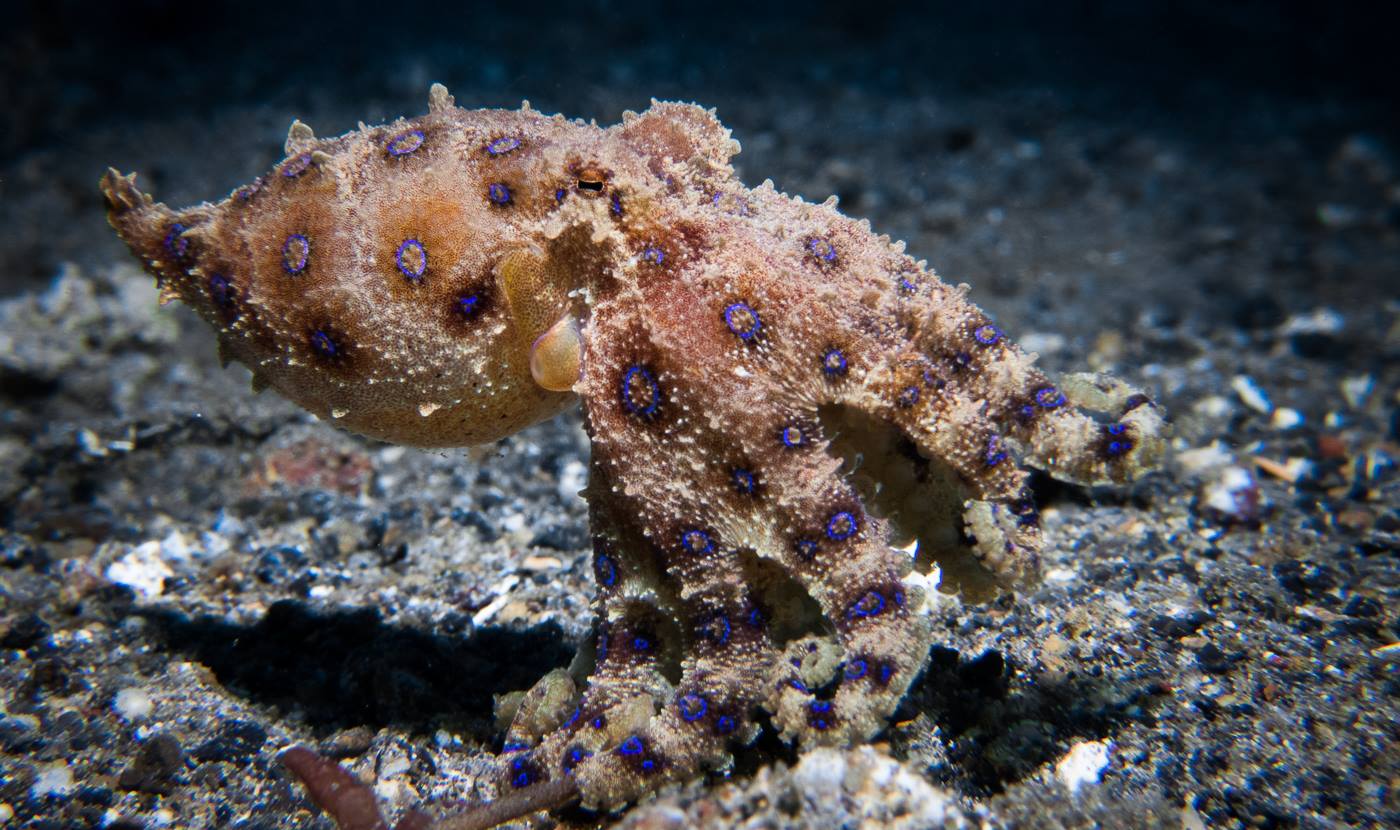
Guntur Bluering Octopus spotted at Lembeh
Nudibranchs, blue-ring octopuses, and a range of crustaceans can be spotted at all depths at our combination sites too.
The best thing about Lembeh is that there are iconic critters to be found at all dive site types and at all depths! For a deeper dive into the fascinating creature, check out our previous article, “Muck Diving in Lembeh and Iconic Critters of the Strait“.
Example Dive sites in Lembeh for Different Depth Levels
While almost all of the sites in Lembeh can be dived at all depths and provide tremendous critter sightings, below is a list of a few dive sites that do lend themselves best to certain depths.
1. The Mawali Wreck
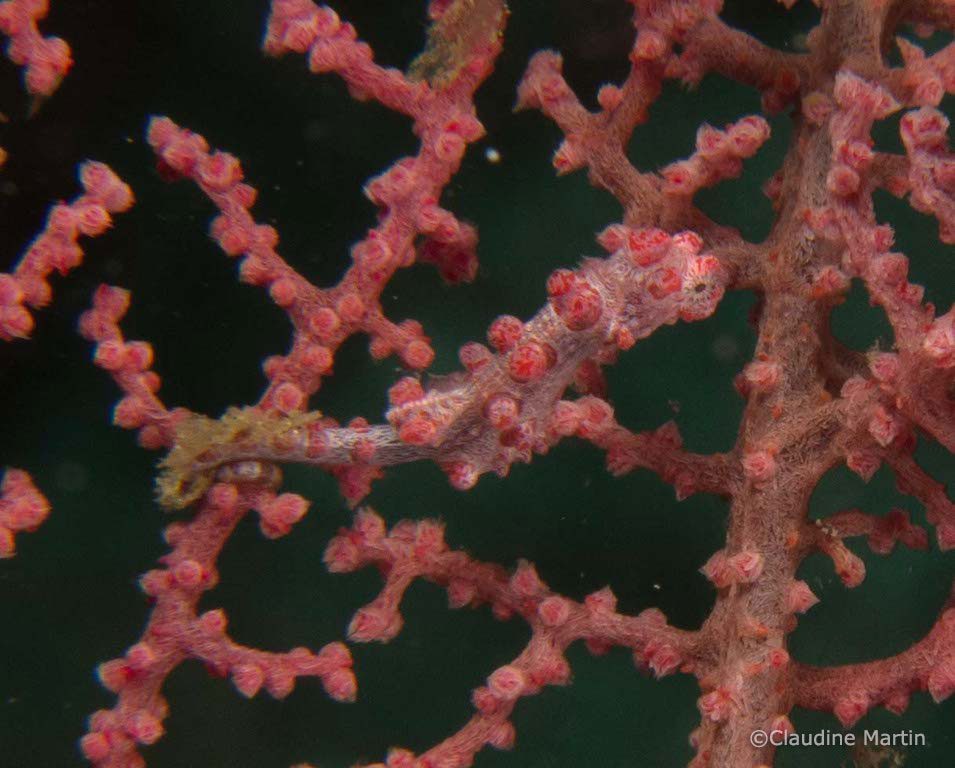
Bargibanti pygmy seahorses at Lembeh Strait
This beautiful WWII Japanese freighter wreck lies on her side and is encrusted in corals and home to a plethora of critters. Advanced Open Water certification is recommended for this site due to depth areas reaching 30 meters.
Critters found here include Bargibanti pygmy seahorses, a plethora of nudibranch species and an array of crustaceans. This is a great site for both macro and wide-angle photographers.
2. Nudi Falls
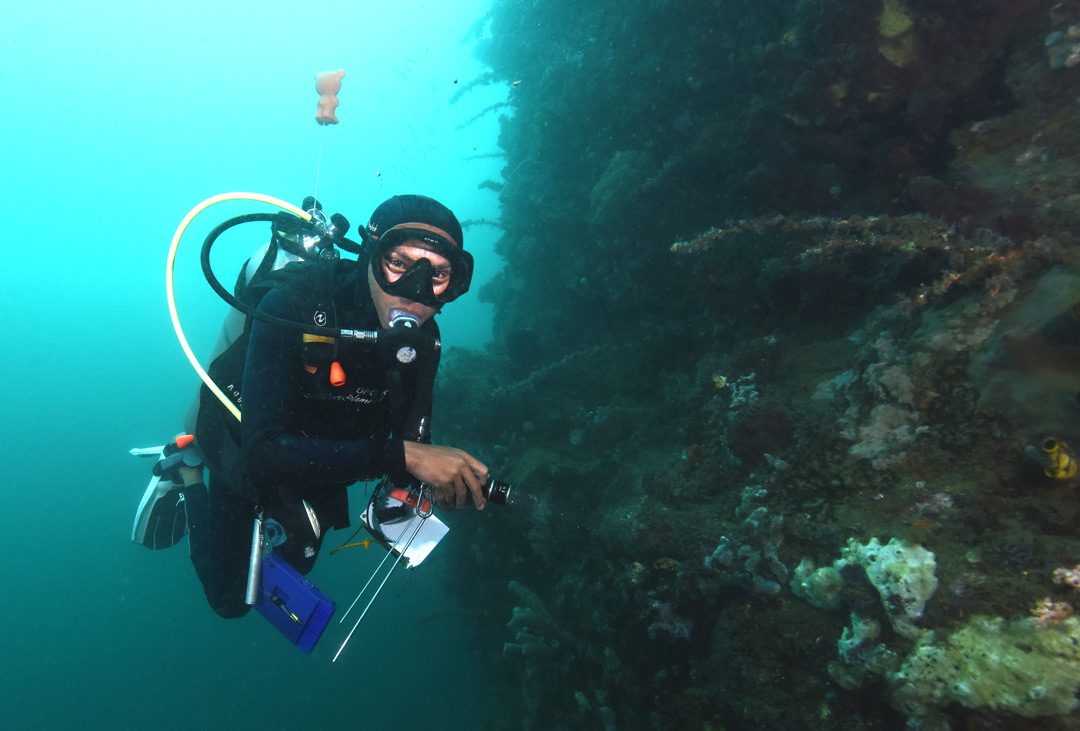
Nudifalls lived up to it’s name in the Strait
Divers’ bubbles sometimes dislodge nudibranchs from the wall above, sending them drifting down – hence the name Nudi Falls. This is one of the most popular sites in the Strait. It consists of a beautiful sheer wall with a rocky slope below, then a sandy slope, levelling out into the main channel of rubble sprouting a deep forest of large soft corals. Scenically, this site is unlike any other in the Strait.
This is a great site for Open Water certified divers and bottoms out at around 20 meters. Possible critters here include pygmy seahorses, giant frogfish, pink-eared mantis shrimps, a range of nudibranchs (of course) and Banggai cardinalfish.
3. Angels Window
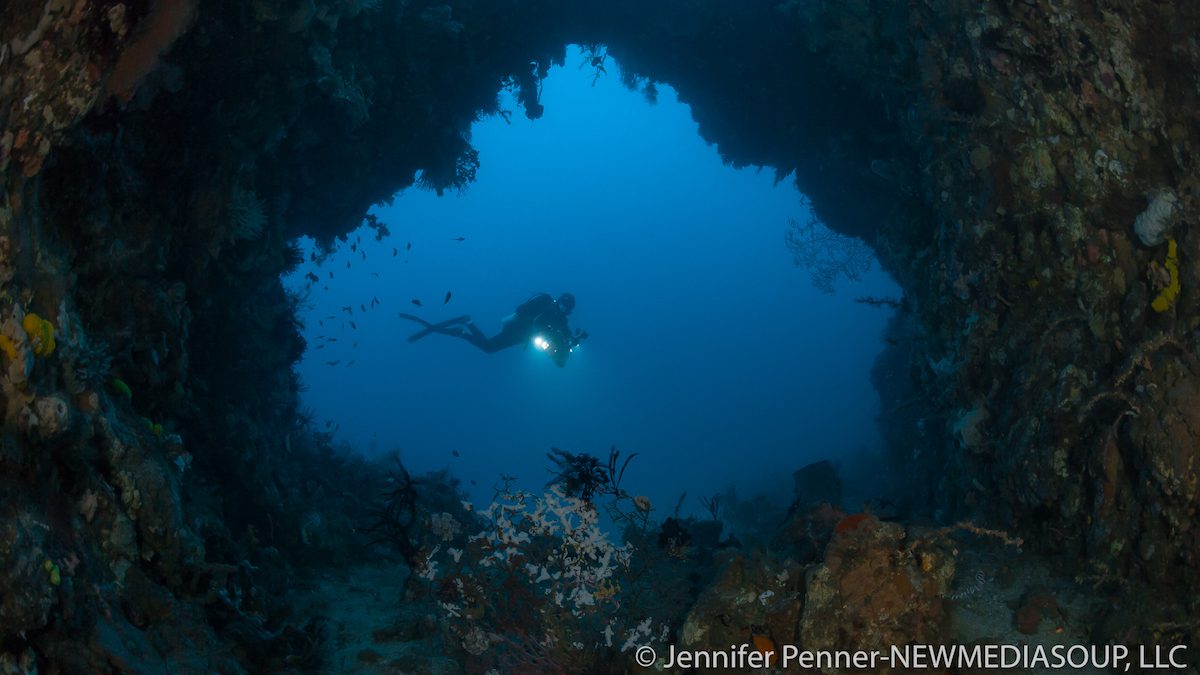
Mastering buoyancy will help you in all types of diving not just muck diving and underwater photography
This twin-peaked coral pinnacle comes within a meter of the surface. A large cave offers a swim-through for divers on the deep end of the pinnacle. This site got its name from the sunlight that shines through the cave opening in the early morning. One side is a coral slope that levels out onto a sand flat at 15 meters and on the other side is a wall to a shelf at 8 meters, then a small plateau and another drop-off, down to 20-32 meters.
However, to fully appreciate the wonders of Angel’s Window, including Bargibanti pygmy seahorses, Xeno crabs, leaf scorpionfish, bubble coral shrimps, and even day octopuses, an Advanced Open Water certification is recommended. This site is a playground for both macro and wide-angle underwater photographers.
4. Dante’s Wall
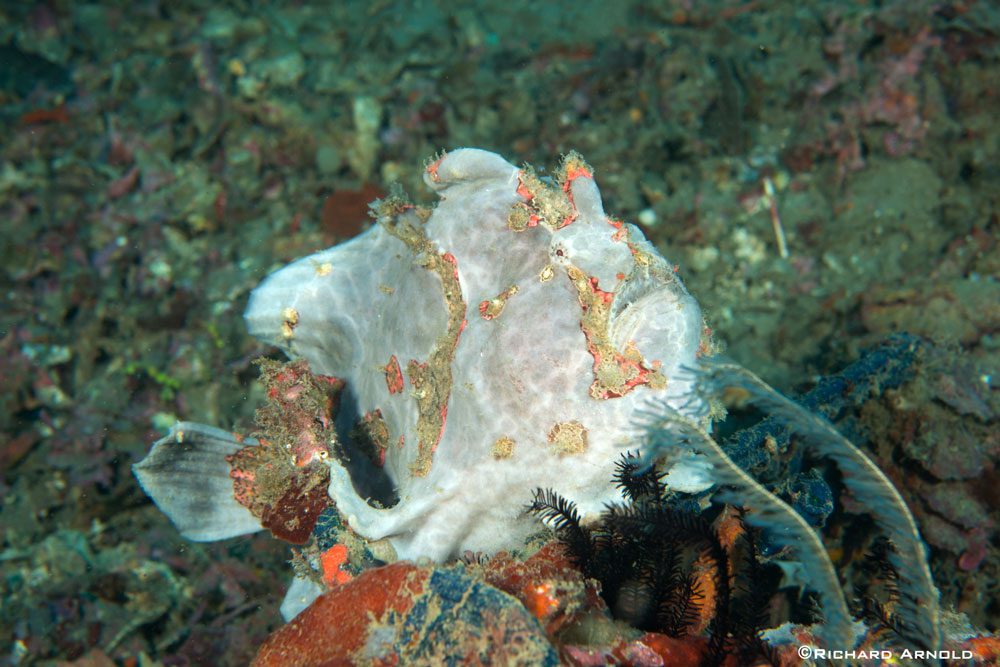
Giant frogfish at Dante’s wall
This is another site that we recommend having an advanced open water certification for due to the depth. The site is named after a dive guide named Dante. Dante’s Wall is located at the very northern tip of Lembeh Island. The site has a beautiful wall going down to 30-35 meters, covered in black corals and sea fans. Where the wall ends at a slope, in the shallows there is a small opening to a huge cave with shrimp, lobsters, and flashlight fish. You may also find here giant frogfish, pygmy seahorses, pinnate batfish, and numerous nudibranch species.
5. Air Bajo
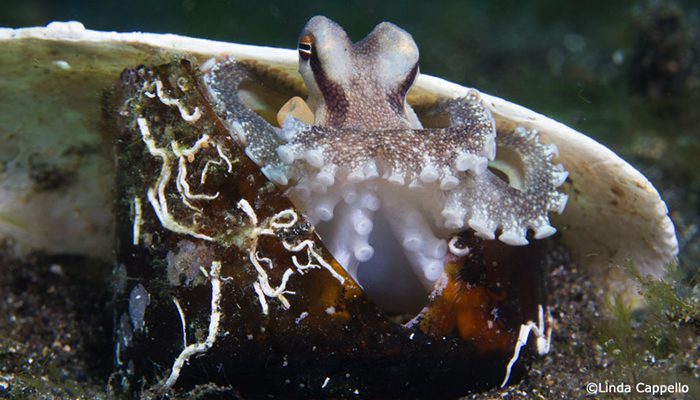
Dive Guides Abner, Opo K and Nolfi spotted a coconut octopus at Aer Bajo II
A beautiful shallow site that is a Lembeh classic and can be enjoyed by all. In Indonesian, Air Bajo means Sea Gypsy. Air Bajo is a large area that is broken up int three dive sites. Each of the three sites begins with a shallow sandy flat 4-6 m deep, then a gentle sandy slope to a depth of 20m where the bottom gradually flattens out. This site is typical of so many of Lembeh’s other classic muck sites where you can find coconut octopus (actually, numerous octopus species), seahorses, frogfishes, and a plethora of crustaceans.
How Do We Choose Dive Sites?
Seasonality plays a crucial role in Lembeh diving. Sea conditions, prevailing currents, and even the time of year all influence where we choose to dive. Why? Because these factors determine where our fascinating critter friends are most active! Our dive guides, being in the water daily, possess an unmatched understanding of these ever-shifting patterns.
Want to delve deeper into the must-visit dive sites of North Sulawesi? Check out our previous article, “Best Dive Sites in North Sulawesi“.
BOOK YOUR STAY WITH LEMBEH RESORT
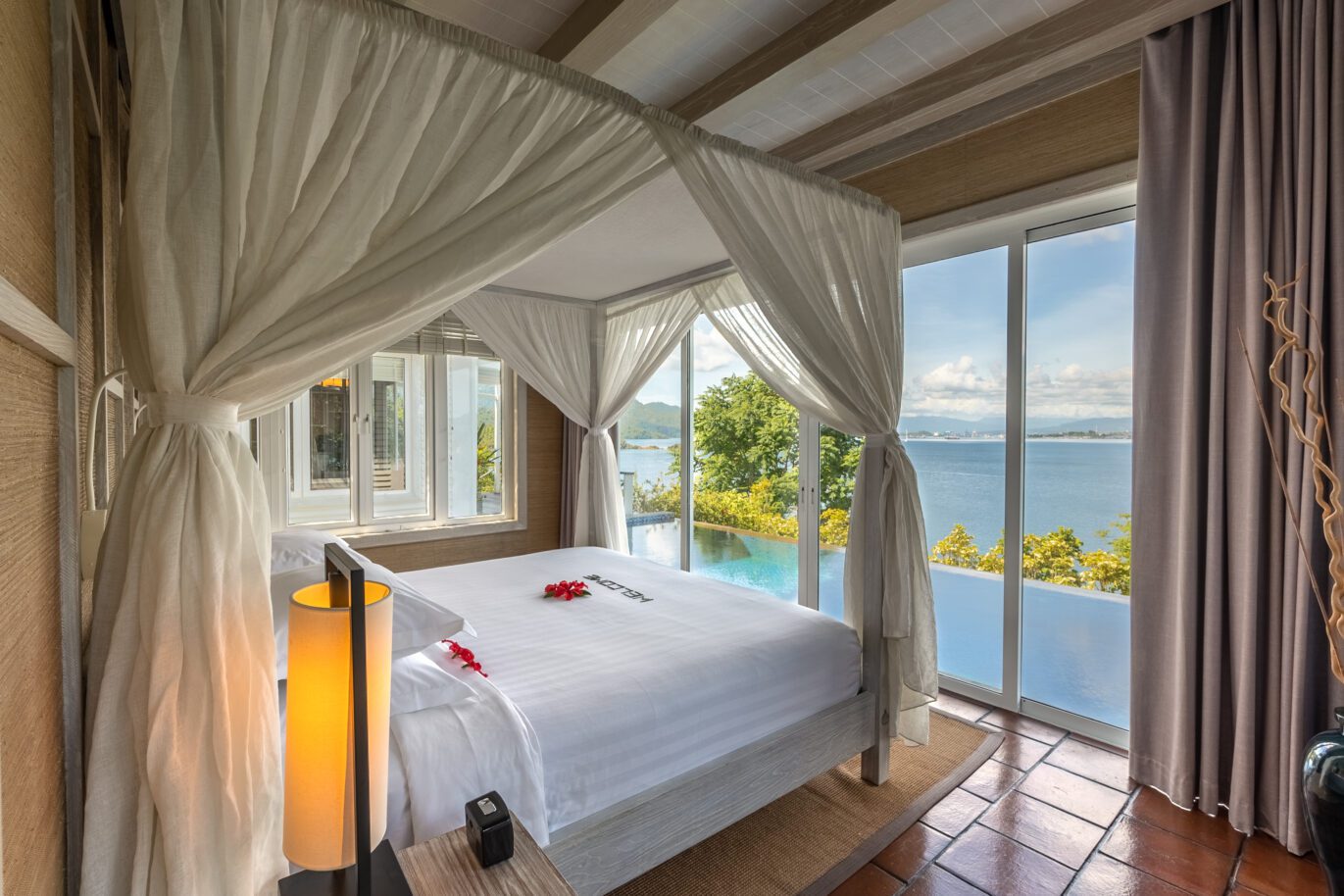
Lembeh Resort Cliffside Villa Bedroom
Lembeh Resort Premium Luxury Cottages spacious verandah with outdoor seating
If you are ready to book your stay with us – or would like more information about our rates and availability contact us at reservations@LembehResort.com.
Our reservations team looks forward to assisting you!
FURTHER READING
If you enjoyed reading this article, you may also enjoy some of our other articles about marine life found in the Lembeh Strait – complete with tips for photographers too!
Devil Scorpionfish: Dive into the Behavior and Adaptations
10 Intriguing Hairy Frogfish Facts
All About The Bobbit Worms: History, Hunting, Mating, & More



